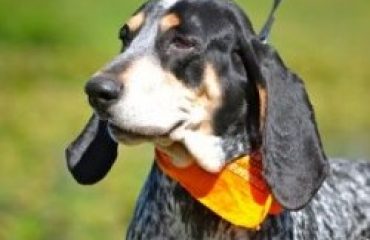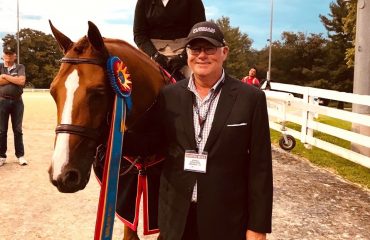
Boyd Martin riding Gloria Callen’s mare Welcome Shadow
Photo by Amber Heintzberger
Well known for both his fun-loving approach to life and his indefatigable work ethic, Boyd Martin has represented the U.S.A. in three-day eventing at two Olympic Games and two World Championships, and was on the gold medal-winning Pan Am Games team in 2015. Boyd’s wife, Silva Martin, is a grand prix dressage rider and they have a son, Nox. Boyd and Silva train out of their own farm, Windurra USA in Cochranville, Pennsylvania, and spend winters at Stable View Farm in Aiken, South Carolina.
What are a few of the most important things to consider when walking a cross-country course?
The footing is the first consideration and will determine whether I’ll use studs, and which ones, depending on whether the ground is hard, good or very deep and muddy. This can also influence how fast I decide to go. I’ll note where the warm-up is in relation to the start box, so that I can plan getting to the start on time. You always want to give the first fence a good ride as it sets the tone for the rest of the course, so even if it’s an easy-looking fence, give it a good look and don’t take it for granted. I’ll walk a course a couple of times so that I know my way around the jumps, have a chance to walk all of the combinations and understand any options, and wheel the course so I can choose my minute markers when that applies. (The course is measured with a meter wheel that the rider rolls on the ground, which is used to measure the actual distance of the course and to calculate — if you’re cantering along at say, 450 meters per minute, for example — where you should be at various points on the course.)
For bigger events, the courses are roped, but you still want to pay attention to the fence numbers because sometimes jumps on different courses look similar and you want to know for sure which one you are meant to be jumping! I also think it’s good to walk a course with a coach to get some advice, and then again on your own so you can think about your plan without any distractions.
How do you handle competing multiple horses at an event?
First, I’ve got a schedule mapped out for which horse needs to be where and when. I post this outside the tack stall to keep things organized throughout the weekend. Since we have ride times in eventing, it makes planning somewhat easier. Then I need one or more really organized and enthusiastic grooms or working students. At Rolex, I brought two grooms with me for two horses, but at events where I’m riding a number of horses, I may have three people helping with 10 or 12 horses. They really have to be on the ball and make sure the horses are tacked up and ready to go on time, and ready to take a horse after a ride and hand over the next one, wearing the correct tack and bridle number. Other than a quick snack or drink to stay hydrated and fueled up, my job is to keep my head in the game and remember my dressage test or jumping course, and to give each horse its best ride.
Do you set your cross-country watch to count down or up?
At a three-day event, I set it to go up because I’ve calculated during the course walk where to be every minute, and have markers on the course to keep me on time. My watch beeps every minute, and you can tell by those markers if you’re on time, too slow or ahead of the clock.
At a horse trial, I set my watch to count down, which gives me a good estimation of how long I’ve got until I need to be finished.
What are your favorite jumping grids for young horses?
To be honest, I quite like bounces; I think bounces at a low height are good for a horse’s technique and sharpness. They really make the horse’s shoulder and front end operate well. The key is not making them too big so the horse has to work too hard. They’re good for making horses stronger and quicker with their front ends, and they’re also good for slowing them down without getting too strong on their mouth since it’s hard for a horse to accelerate through a bounce.
What supplements do you like for hard keepers?
Different horses have different needs, and the first step to figuring out what best suits any individual is a thorough veterinary evaluation to make sure the horse is in good health. You should also have his teeth floated and examined by an equine dentist to make sure he’s able to properly eat the feed that you give him. All of our horses’ diets are customized by a nutritionist from Purina Equine, based on their workload, temperament and body type. For some horses, we use a supplement from SmartPak Equine called SmartGain, which includes fats and amino acids as well as prebiotics, probiotics and enzymes for digestive health. After you’ve checked your horse’s health, a good first step is to talk with the representative at your local feed store about your horse’s particular needs.













